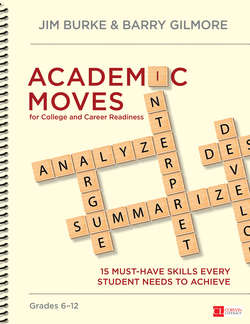Читать книгу Academic Moves for College and Career Readiness, Grades 6-12 - Jim Burke - Страница 31
На сайте Литреса книга снята с продажи.
Discussion, Presentation, Technology, and Multimedia
ОглавлениеDiscuss. To get students thinking about claims and counterclaims, try a get-off-the-fence discussion.→ First, come up with a series of arguable statements or questions about a text or topic. Example: Romeo and Juliet are not truly in love; they’re infatuated only with one another.→ Have students who agree with the statement move to one side of the room and students who disagree move to the other. Balance discussion by calling on each side in turn.→ Students who are undecided may stand in the middle of the room but may not speak. At the end of the discussion, have these students choose a side and explain why.→ After you’ve discussed several statements, have students write down their thoughts, including noting any convincing arguments made by other students, places they changed their minds, or new ideas about the topic. Use these notes to come up with a claim and counterclaim as a class.
Track. Once students have practiced identifying claims and counterclaims, teach them to create a table in Microsoft (MS) Word or to use columns in MS Excel in order to create T charts. This use of technology not only allows students to catalog pros and cons, for instance, but also provides them a tool for organizing and reorganizing that material to find the most effective argument.
Present. When students share material with the class, ask them to include a counterclaim as part of the presentation, perhaps devoting one slide to this task. Encourage them to use this moment in a presentation as a chance to involve the audience by asking for feedback or discussion on a point.
YouTube Moment: The online world is robust with argumentation, from political speeches on YouTube to blogs to posts and comments in online forums. Students need to learn to navigate these arguments. Choose a video with user comments (you will probably wish to screen the comments for appropriate content before using them with students) and ask students to look at those user comments for appeals to logos, pathos, and ethos and to evaluate the effectiveness of each. Ask if each is an argument or a persuasive/opinion piece. How do they know? Present their findings to the class.
